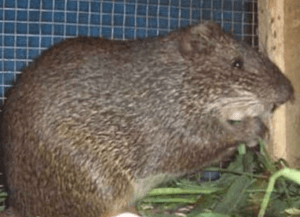Grass-cutter farming in Upper West receives huge support
 The Ajinomoto Foundation in Japan has invested Nine million Japanese Yen (about $80,000) into grass-cutter farming in seven districts of the Upper West Region for three years to boost protein production and intake.
The Ajinomoto Foundation in Japan has invested Nine million Japanese Yen (about $80,000) into grass-cutter farming in seven districts of the Upper West Region for three years to boost protein production and intake.
The investment was channelled through the Grass-cutter Initiative for Rural Transformation, a local non-governmental organisation, championing grass-cutter rearing in rural communities as a means of creating job opportunities and reducing poverty.
Over 50 farmers are benefiting from the 2018 investment support which is expected to produce at least 600 grass-cutters within the project lifespan of three years.
In 2014, the Japan International Cooperation Agency (JICA) pumped $500,000 into the Ghana Grass-cutter Project to provide cages and acquire breeding stock for about 54 farmers in 18 communities in the region.
The farmers were responsible for the feeding and health management of the second largest rodents in Africa after porcupine, according to animal scientists working on the Project.
Dr Christopher Adenyo, Coordinator of Ghana Grass-cutter Project, told journalists on the sidelines of a training session in Wa, that there was a “huge demand”, which farmers ought to take advantage.
He described grass-cutter meat as a good delicacy – contained less fat but had more protein – an important building block of bones, muscles, cartilage, skin, and blood.
“The demand for grass-cutter is higher, there is ready market for it and in fact, it is a good source of income.”
“Currently, a mature grass-cutter costs about GH¢200.00 in the market”.
He advised farmers to prepare secured cages and to provide the animals with enough food to get the best out of rearing them.
“If we want to keep a successful grass-cutter, we need to know how it behaves in the wild and domestic settings.”
He said the rodents were nervous and aggressive and needed to be handled with utmost care.
He however, added that, “if there is continuous crossbreeding they would be tamed and domesticated”.
Nandom, Jirapa, Lambussie, Sissala East, Wa East, Wa Central and Lawra Districts, had been chosen for the rearing of the animals.
Mr Mahamudu Abdulai, a grass-cutter farmer, said he had produced over 20 of the rodents since he started production in 2016 but many had been sold and some killed for meals.
The challenge was how to devote enough time to their feeding which must be done at regular intervals.
Madam Aramata Musah, an Agriculture Extension Officer in Sissila East Municipal, said many farmers lost their animals due to lack of time for their upkeep.
She added that those who had been identified to have enough time for the rodents had been supplied with some more.
Source: GNA

I am very much interested in this business and it is a hobby to me keeping of animals. I kept Rabbits before now and I enjoyed it so much it was fun for me.